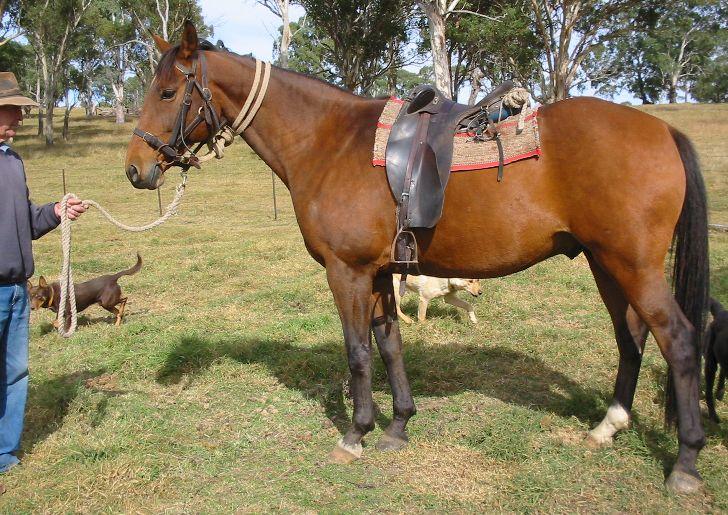
Continent: Oceania
Country: Australia
Weight: 400 – 550 kg
Height: 145 – 163 cm
The Australian Stock Horse originates from Australia, where it developed mainly in the rural regions of New South Wales and Queensland.
It is closely tied to Australian equestrian culture, inherited from the colonial era, when horses were essential for cattle farming and mustering in the vast grazing lands.
A symbol of the Australian bush and the lifestyle of the stockmen, it embodies both adaptation to local conditions and the pioneering spirit of the nation.
The Australian Stock Horse is bred across the whole of Australia, with stronger concentrations in certain states:
Outside the continent, the breed is also found in New Zealand, as well as in North America and the United Kingdom, where it is used for ranch work, polocrosse, and western disciplines.
The Australian Stock Horse represents a major genetic heritage for Australian horse breeding.
Bred from a blend of bloodlines selected for endurance, agility, and a docile temperament, it has retained a natural hardiness and functional versatility valuable for reproduction.
Thanks to its heritage combining Thoroughbreds, Arabians, Barbs, and hardy ponies, it passes on desirable qualities such as exceptional physical stamina, fast recovery capacity, and morphological balance suitable for multiple disciplines.
The breed is also renowned for its innate “cow-sense”, a decisive genetic asset in cattle-working horses.
This combination of traits makes it a solid foundation for improving horses destined for pastoral work, equestrian sports, and endurance competitions, while preserving functional traits adapted to demanding environments.
The first horses arrived in Australia with the First Fleet of British settlers. They came mainly from the Cape of Good Hope (Cape Horse), India, and England. These horses were robust but varied in type.
Over the decades, new bloodlines (Thoroughbred, Arabian, Welsh Pony, and Timor Pony) strengthened speed, endurance, and adaptability. Harsh climate, long distances, and intensive cattle work naturally eliminated less resilient horses.
On large cattle and sheep stations, breeders selected the most agile, hardy, and docile horses for cattle work. These horses were already called “Stock Horses” long before the official breed recognition.
The first American Quarter Horses were introduced, enhancing manoeuvrability, power, and short-distance speed, without compromising hardiness.
The Australian Stock Horse Society (ASHS) was created to preserve and promote the breed. A studbook was opened, registering both traditional types and controlled crossbreds.
The Australian Stock Horse went on to excel in campdrafting, polocrosse, endurance, and eventing, becoming both a national symbol and a significant equestrian export.
"A sharp mind in an enduring body, always ready to work in harmony with its rider."
- Pastoral role maintenance : The breed will remain essential for cattle work on Australian stations, where its practical skills are irreplaceable.
- Sporting expansion : Campdrafting and polocrosse, both growing in popularity, strengthen its national and international profile. Its agility and speed are also attracting more interest in eventing and endurance.
- Export growth : Overseas demand is increasing, particularly in New Zealand, South Africa, and the United States, where its hardiness and versatility are highly regarded.
- Controlled genetic management : The Australian Stock Horse Society ensures the preservation of the breed’s hardiness, endurance, and temperament, while allowing limited outside blood to enhance certain sporting abilities.
- Cultural recognition : The breed enjoys an emblematic image in Australia, supporting conservation efforts and helping pass on its equestrian heritage to future generations.
The Australian Stock Horse is known for its overall hardiness, the result of natural selection under Australia’s demanding conditions. It is a generally healthy breed, with a low incidence of genetic diseases thanks to a broad genetic base and rigorous studbook management.
Its life expectancy is usually 20 to 25 years, with well-cared-for individuals often exceeding this. Health issues are rare, but some sensitivities may occur:
Care should include a balanced diet adapted to workload, along with regular dental care, hoof trimming or shoeing, and vaccinations. The hooves are naturally strong and resistant to hard, rocky terrain, often allowing the horse to work barefoot depending on its use.